Geological Setting
Geological Setting of Mount Vision as it relates to its granitic composition, including samples.
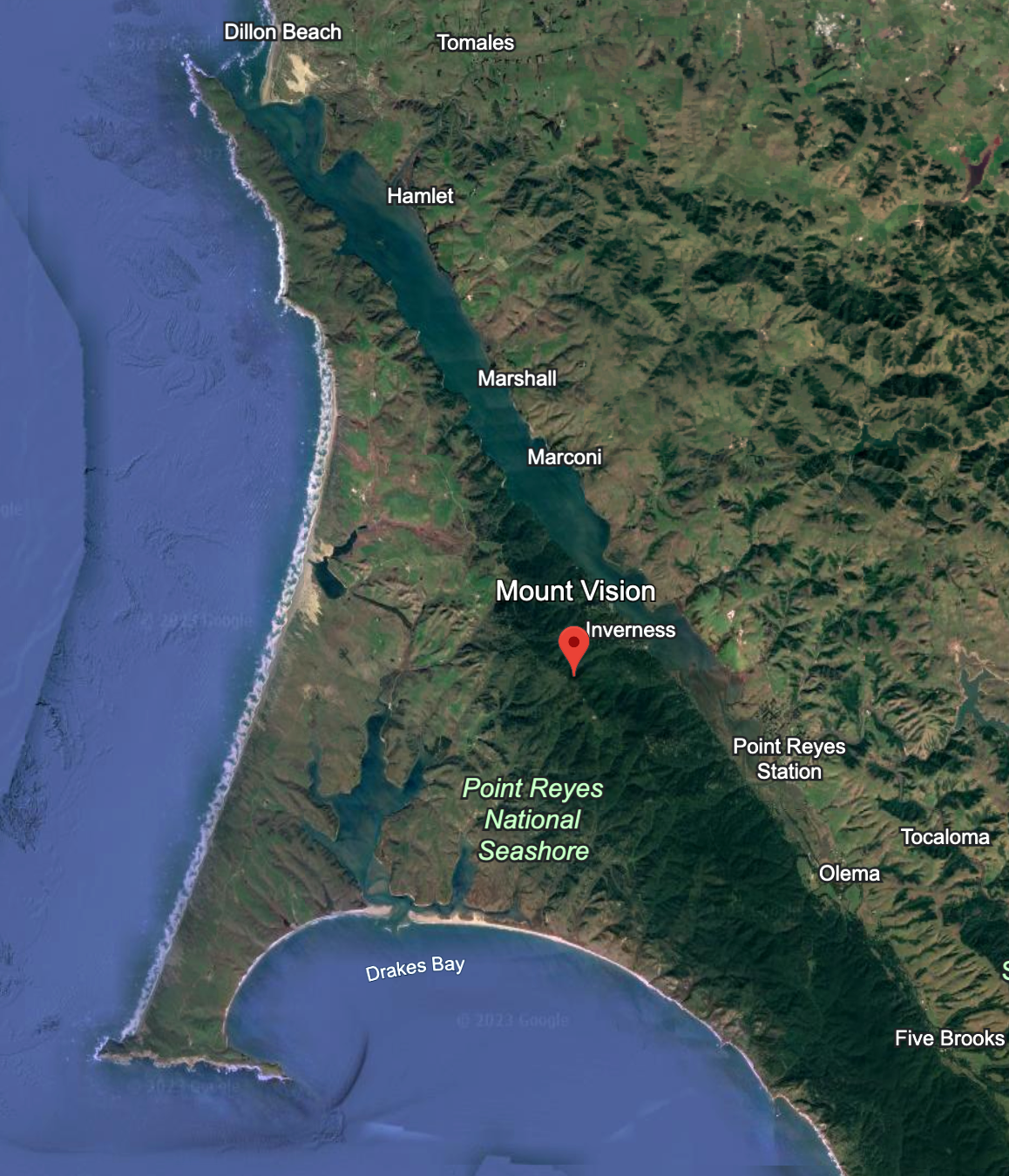
Located in Northern California on the Point Reyes Peninsula, Mount Vision (above) is situated west of Tomales Bay and the historic town of Inverness.
Geological Setting of the Granite
The northeastern edge of the Point Reyes Peninsula, following the San Andreas Fault, is named the Inverness Ridge (pink, below) and includes Mount Vision. It is predominately comprised of granitic rock formed ~80 million years ago during the Cretaceous Period. Outcrops of granite are also found westward on the Point Reyes Headlands and it is assumed the granite underlies the entire Point Reyes Peninsula.
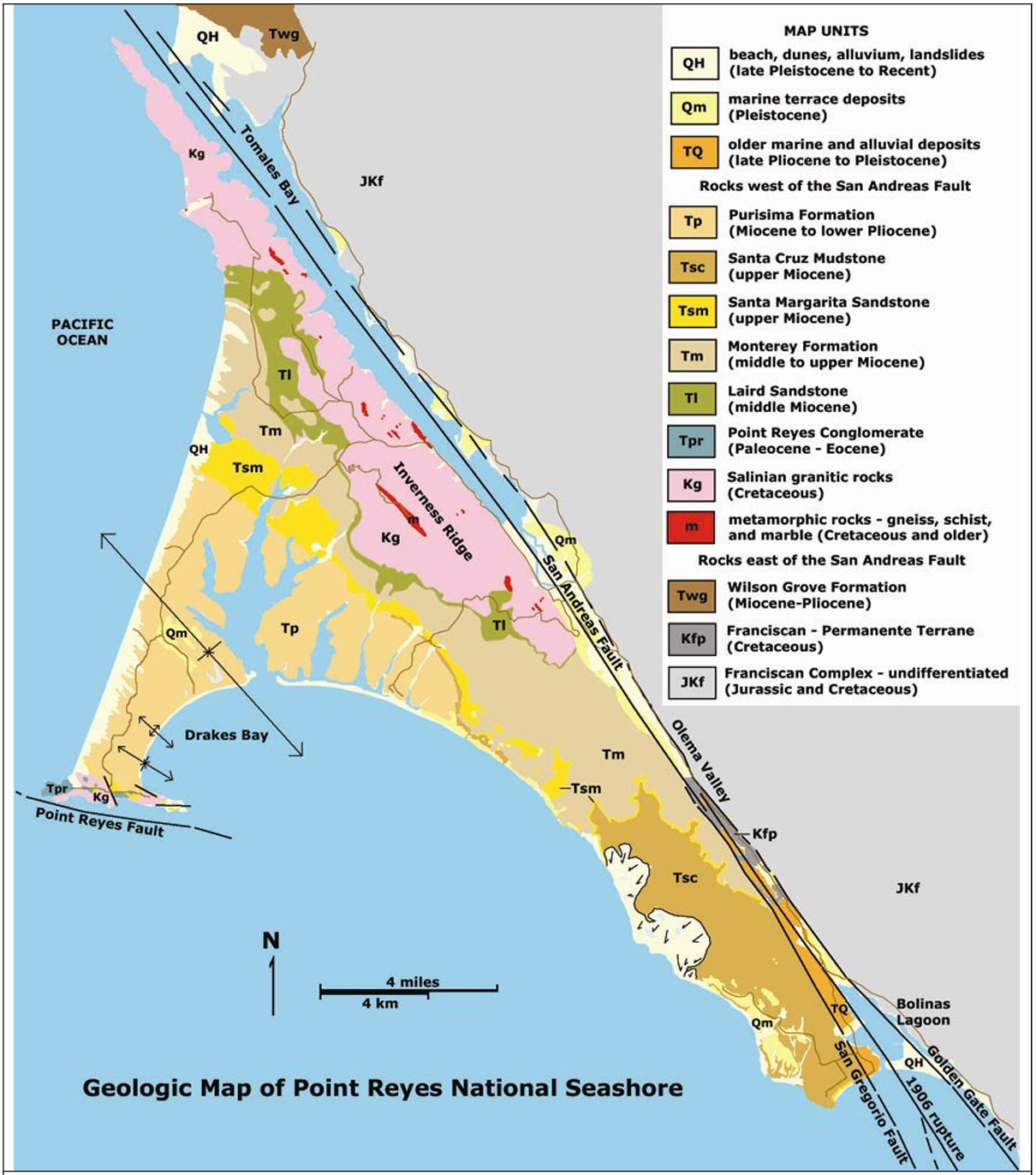
Granite is an igneous rock formed from magma that cools slowly and solidifies, and a plutonic rock because this process occurs underground. Granite is common in the continental crust of the Earth, found in intrusions varying in size from small dikes to batholiths spanning hundreds of kilometers.
The Mount Vision Granite comes from such an enormous batholith. What's found in Point Reyes was originally formed in the southern portion of the Sierra Nevada Mountain range near the Tehachapi Mountains ~500 kilometers away.
Later, ~30 million years ago, plate tectonics began to move this portion of Sierra Nevada granite and now it is trapped on the eastern edge of the Pacific plate in structural block named the Salinian Complex and is being transported northward by the adjacent San Andreas Fault.
The Salinian Complex is massive (below, pink), bounded by the Bodega Head to the north, the Big Pine Fault to the south (just north of the Transverse Ranges), the San Andreas Fault to the east and the Nacimiento Fault to the west. It is believed that the Point Reyes granite is part of the northern extension of a much larger granitic structure which underlies much, if not all, of the Salinian Complex.
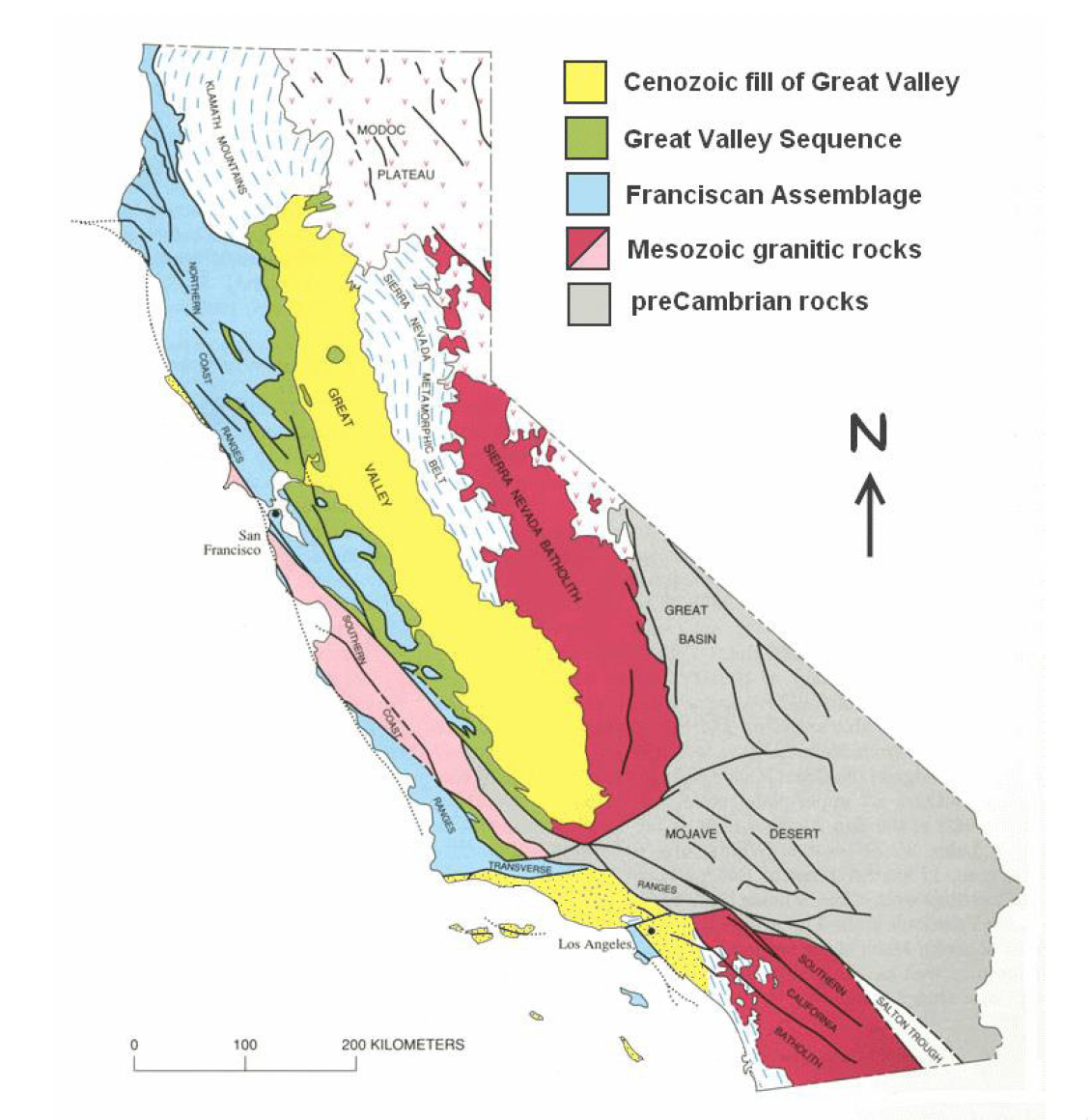
All the igneous rock found on the Point Reyes Peninsula (and the Salinian Complex and the Sierra Nevada), is referred to as "granite", the common term for igneous rock comprised of mostly quartz and feldspar minerals.
In reality, the proportions of quartz and feldspar minerals found in granite can vary substantially from location to location. A rigorous naming classification, called the QAPF, was developed to represent this heterogeneity (the QAPF is presented this article).
As it turns out, based on its specific mineral proportions, the type of "granite" predominately reported on the Inverness Ridge, including Mount Vision, is named Granodiorite.
Other "granites" identified on the Inverness Ridge are Granite "proper" and Quartz Diorite. Towards the northern portion of the peninsula, beginning near McClure's Beach and extending north to the Bodega Head, one finds Tonalite. West, at the exposures of the Point Reyes Headlands, one finds Porphyritic Granodiorite (Porphyritic meaning it has a distinct difference in size of its crystals).
Note that Granite "proper" has its own mineral content designation, different from Granodiorite or Quartz Diorite, etc., which can be a source of confusion with the common term "granite" that refers to all of these rocks.
There are many reasons why, even at the geographical scale of the Point Reyes peninsula, such variation exists in the granite found. Foremost, the magma the rocks formed from had a different chemical composition in time and space. The rate of cooling and pressure also played a role in the way the rock formed from the magma. And, subsequent tectonics moved the granitic plutons around redistributing their juxtapositions. It's a big jigsaw puzzle that is even more complicated than is being portrayed here and not all the pieces are completely understood.
Samples of Mount Vision Granite
The pictures below show samples of two types of granite found on the property. The "dark" sample (left), similar to the sample shown at the top of this article, is more commonly found. But there is enough of the "light" sample (right) available to be intrigued by it.
Visually they look different. The "dark" sample has more mica, mostly biotite, which is black, and gives the rock a salt-and-pepper look. Both samples have visible quartz and feldspar crystals, with the "light" sample having more and larger quartz and feldspar crystals, and having much less mica.
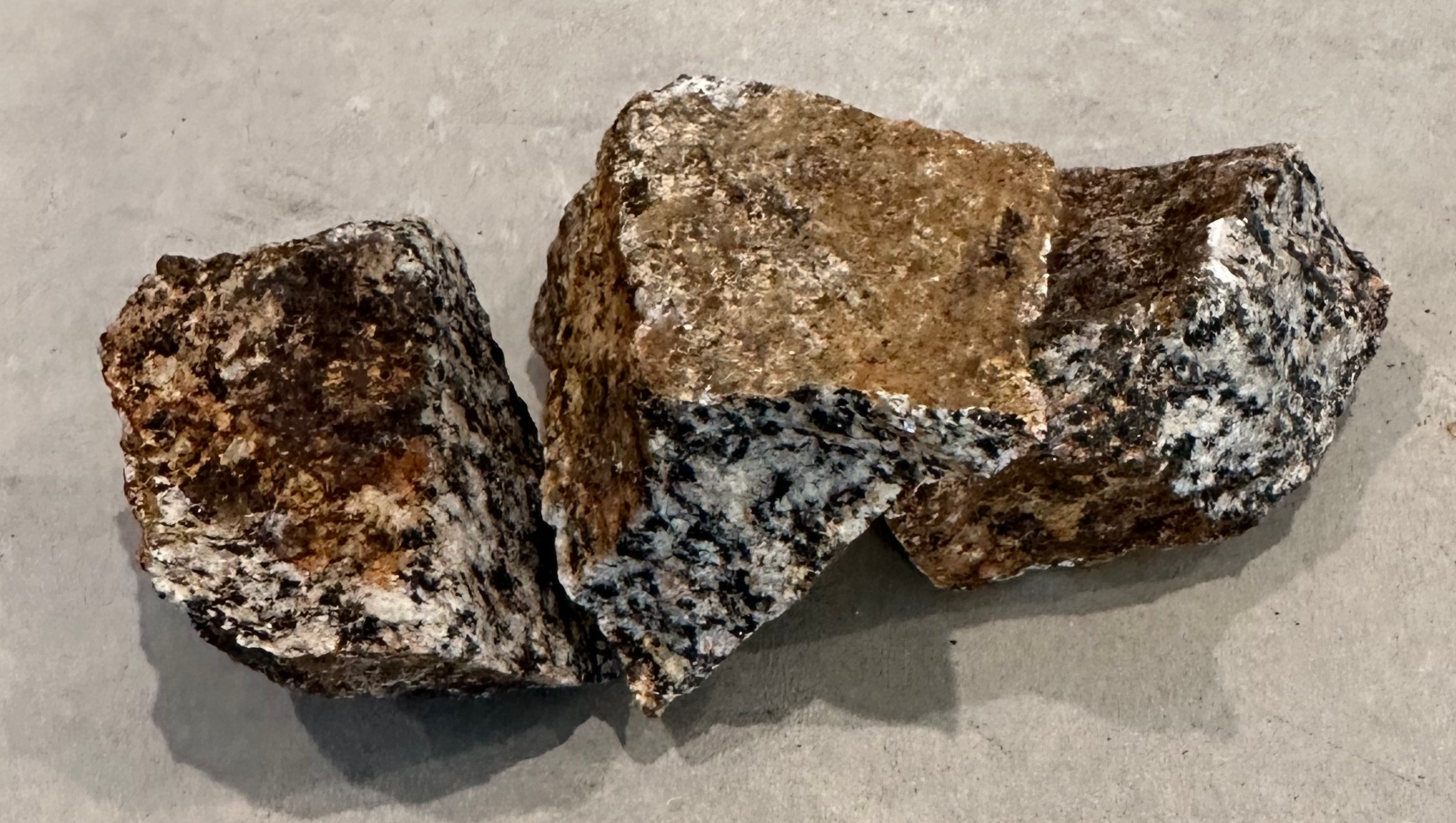
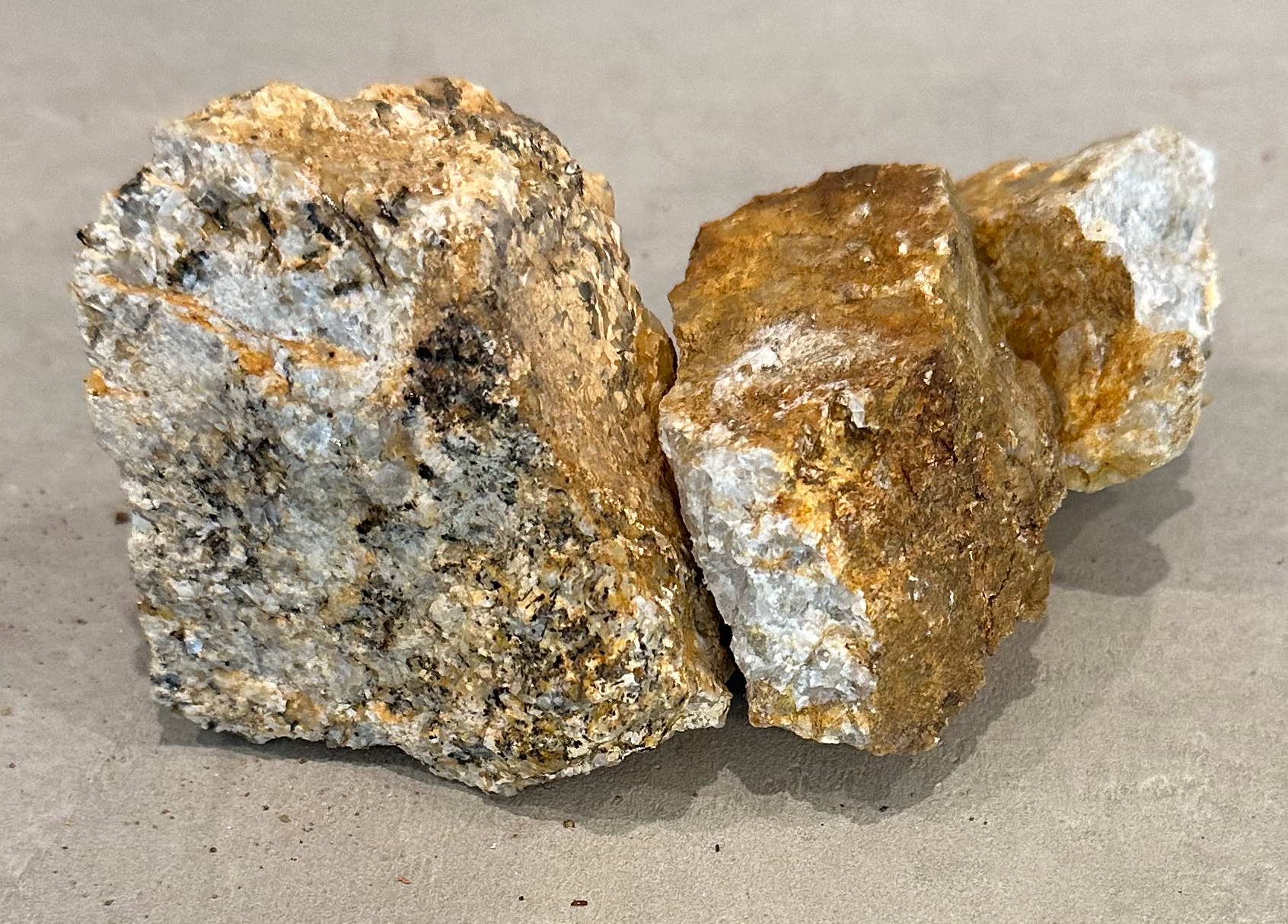
Dark Sample (left) and Light Sample (right)
An analysis to estimate the ratio of one to the other on the property has yet to be performed except to confirm the dark sample appears by far to be the most prevalent.
Most pieces of granite found to date are not "in-situ", but are loosely "floating" about the surface. In places one can dig a bit deeper and find "in-situ" samples which are generally fractured and weathered, but not decomposed. Heavily weathered granite is also common. Elsewhere, along the road cuts especially, one finds deep beds of decomposed granite and associated primary clay.
If you wish to learn about the chemical composition of the granite and how we can make a glaze from it, go here.
References
- Geology at Point Reyes National Seashore and Vicinity, California: A Guide to San Andreas Fault Zone and the Point Reyes Peninsula, USGS, Chapter 9
- Geology of the Point Reyes Peninsula, Marin County, Ca, by Alan J. Galloway, 1977
- Point Reyes National Seashore: Geologic resources inventory report. Natural Resource Report NPS/NRSS/GRD/NRR—2018/1784. National Park Service, Fort Collins, Colorado by R.B. Port, 2018
- Rb-Sr Whole-Rock and Mineral Ages, K-Ar, 40Ar/39Ar, and U-Pb Mineral
ages, and Strontium, Lead, Neodymium, and Oxygen Isotopic Compositions for Granitic Rocks from the Salinian Composite Terrane, California, by R. W. Kistler and D. E. Champion, Open-File Report 01-453, USGS, 2001
